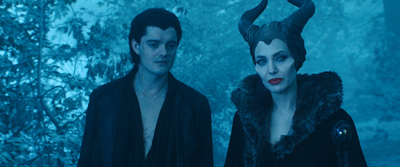When asked about the meaning behind No Doubt’s “Just a Girl”, Gwen Stefani explained that it was about her struggles against the restrictions placed on her – specifically – because she was female. Every woman I’ve met has at least a half-dozen stories of some kind of injustice or imbalance she encountered in the workplace, at a party, at school, or in the home. It’s like the ridiculous double-standard that a man who’s dating four women at the same time is a “stallion”, yet the woman who does the same is a “slut”. It’s not just the Madonna/whore complex, it’s our cultural unwillingness to treat women as though they are members of society valued equally with the men.
Between last week’s Supreme Court ruling that shreds the protective protest barriers around medical clinics that offer abortions and yesterday’s ruling that allows large companies, like Hobby Lobby, to “opt out” of offering certain kinds of birth control due to “religious objection”, women are more under fire than ever. At a time when over 62 million women aged 20-64 are employed all over the country (roughly one-fifth of the entire US population), it seems like we have a value that’s less than zero. We are not defined solely by our breasts, our uteruses, or our vaginas any more than men can be summed up solely by their penises. The fact that we have brains or spines seems to be completely missing from the conversation.
Will letting “closely held corporations” opt-out of the contraception mandate reduce healthcare costs or the employer insurance burden? No, not quite. Large corporations like Hobby Lobby are typically “self-insured”, meaning that they pay health insurers an administrative fee to get cards and (effectively) rent their network. They get to design their health insurance benefits. BUT, when the government points at insurance companies and says that they have to cover the cost of contraception as a fully-covered benefit when their customer won’t have to foot the bill directly, insurers have to pay for that SOMEHOW. That means increasing premium rates for everybody (and that “administrative fee” goes up, too). Hobby Lobby gets off paying for it this year, but it’s baked into their administrative fees next year…and the year after that…and the year after that…(as well as everyone else’s, since they effectively raised everyone’s rates so they would get to pay less). Nice, eh?
So, does restricting access to low-cost birth control further the pro-life cause? NO. According to a study published in 2012, providing free birth control reduces abortion utilization dramatically. The irony is painful in more than one way, and it shows the short-sightedness of these litigants like Hobby Lobby.
Are birth control pills only for women who want to have sex without consequence? NO. A 2001 study discussed the health benefits of birth control pills in alleviating the negative effects from dysmenorrhea (aka “REALLY BAD PERIODS”) and pain from endometriosis. I can also say that I went on birth control pills to control my periods; they were irregular and sometimes debilitating without the introduction of the hormone therapy offered by the pills I took. And anyone who thinks that IUDs are just for preventing pregnancy just doesn’t know how the female body works. Honestly, people, TAKE AN ANATOMY CLASS, WILL YA?!
Are corporations people? HELL NO.
I don’t want my daughter to grow up in a world that’s got less freedom and less opportunity for her than the one I grew up in. When I was a child, I was lucky enough to have a mother who worked in management – who showed me the value of education and hard work as a means to a successful, productive adult life. Seeing her example, it never occurred to me NOT to go to college and NOT to get a job and NOT to try to succeed in whatever I did.
I want my daughter to grow up, and then live her productive, successful adult life in a world where she’s valued. I want her to live in a world where her gender is simply a box to check rather than a box that contains her. I want my son to have a healthy respect for all women (not just his sister), and treat women with the dignity they deserve. I’ve never told my kids that one of them could do something the other had no shot at, that one of them was destined to succeed and the other would be great if they can just get married and reproduce. This is 2014, not 1914.
I choose choice. Options. There must be options. There must be freedom. And someone else’s religious freedom doesn’t get to stomp on my freedom to have those choices. So I will continue to exercise my choice by consciously boycotting organizations that have hurtful views, that carelessly aim to pick apart our society until we are nothing more than a homogeneous, mindless pen of sheep.
Are corporations people? NO. But I’m a person – with disposable income – and I vote.
Don’t EVER count women out. Don’t EVER count ME out.
“I’m just a girl” is one hell of a war cry.



